Are you one of the few ASHA members that vote in the ASHA elections? In this episode, Dr. Howard Goldstein joins me to talk about the importance of ASHA members voting, in addition to some current issues in our field of speech-language pathology and audiology.
Tune in to Episode 51 to learn about:
- Why ASHA members should vote
- What percentage of ASHA members currently vote
- Dr. Goldstein’s experience in the field of speech-language pathology
- Current issues in the field
- Ways to empower ASHA members
Links and Resources
Full Transcript of Podcast: Why ASHA Members Should Vote feat. Dr. Howard Goldstein
Episode 51: Why ASHA Members Should Vote feat. Dr. Howard Goldstein
Jessica: You're listening to the Speech Space Podcast, a podcast full of tips and resources for SLPs. I'm your host, Jessica Cassity, and this is Episode 51. Hey everybody! Thank you for joining me today. We are going to be talking about why it is important to vote in the upcoming ASHA elections. I'm so excited to talk about this topic and I'm going to have Dr. Howard Goldstein joining me. But before we get started, I wanted to let you know that this podcast is brought to you by The Digital SLP membership site, which is a site that features time-saving no print, and low prep resources for SLPs. To learn more about the membership head on over to thedigitalslp.com/digitalslp. All right. So before I bring Dr. Goldstein on the show, I wanted to go ahead and take a moment to let you know a little bit about him. He is currently the Associate Dean of Research and Professor of Communication Sciences & Disorders in the College of Behavioral & Community Sciences at the University of South Florida, which is in Tampa. His academic career has spanned multiple universities, including the University of Pittsburgh, the Ohio State University, and two stints in Florida. While at Florida State University, he served as Chair of Communication Disorders, guiding the department during a period of considerable growth in grant activity, doctoral student production, and innovative educational programs. His contributions to the field were recognized when he became an ASHA Fellow in 1989 and when he earned the Honors of the Association in 2016. He has served ASHA as a mentor, site visitor, trainer, and chair of several task forces and committees related to treatment efficacy, the PhDs shortage in the field, practice, and policies related to mental retardation and developmental disabilities, academic issues, and accreditation and clinical practice research. He served as the ASHA Vice President for Science and Research from 2013 to 2015, and before that, he served on the Board of Trustees for the ASH Foundation for nine years. He is a nationally known scholar for his research in the field of child language intervention. His research and training initiatives have focused on improving the communication and social skills of children with autism and other developmental disabilities. And his recent work has sought to enhance the language and literacy development of students in high poverty schools who are at high risk for language and reading disabilities. He's the author of several books and more than 140 scholarly journal articles and book chapters. He's participated in more than 40 research and personnel preparation grants. And he has served as principal investigator for more than 30 sponsored projects. He's also served on numerous editorial boards and grant review panels. So without further ado, let's go ahead and bring Dr. Goldstein on the show. Hi, Dr. Goldstein, thank you so much for coming on the show today.
Dr. Goldstein: Well, thank you, Jessica. I really appreciate you giving me the opportunity to talk to you and all of your... other people that are using your site.
Jessica: Whenever I got the email to talk about voting, I was really excited because I actually was not aware that only 4% of ASHA members actually vote.
Dr. Goldstein: I know isn't that amazing and it hasn't, well, it hasn't gotten better. If anything, it's gotten worse. And in the recent past to the point where they're actually considering, you know, some other ways to select some of the board members and the president or things like that. I'm not, I know the board of trustees has been talking about it, but I'm not sure what plans are under serious consideration at this point. But, you know, I think that it's sort of symptomatic of a problem that we have in terms of making sure that our members are better acquainted with the value of ASHA to their careers and what a resource it can be for them and how an organization that's this large could actually be a much more effective advocacy group if we get members to be more engaged.
Jessica: Right, right. Exactly. Now about how many ASHA members are there currently?
Dr. Goldstein: We're over 200 now—200,000. It's like 204,000 or something like that.
Jessica: Before we talk a little bit more about voting. Can you just take a minute to share a bit about your background and your experience in the field?
Dr. Goldstein: Sure! You know, I started out in UC Santa Barbara as an undergraduate and didn't find Speech and Hearing Sciences until I was a junior. And it was because a faculty member who I'd worked with from Psychology with children, who was working with children with autism, changed departments from Psychology to Speech and Hearing. And he said, now you've been, you've always been interested in teaching these children with autism to talk. Why don't you check out this department? So I ended up by chance being in one of the premier undergraduate programs back then, and got really good preparation as an undergraduate back then we did Clinical Practica as undergraduates. I stayed a summer in Santa Barbara and worked on a research project with children with multiple artic disorders. And from there, I went to the University of Washington and that was a great Master's Degree program, got involved in some of the type of research that kind of carrying me through the beginning parts of my career. And then I went to the to Peabody College, which became part of Vanderbilt University. And I was actually, my PhD is in Developmental Psych and Mental Retardation Research, but it was an interdisciplinary program focused on developmental disabilities. From there I went to the University of Pittsburgh and I know that we over, we both, you know, had spent some time at University of Pittsburgh. But when I went there for 14 years, I started off as an Assistant Professor and moved up through the ranks. In fact, I was the first person to get tenured there in 14 years. And in the 14 years that I was there, there was like a 100% turnover in the faculty. So that meant that I was on a lot of search committees during that time I was there. Got to meet a lot of people in the field and it was during a consulting visit that I conducted out of University of Oregon that I came up with a number of recommendations and they ended up recruiting me to be a department chair. And I said, well, you know, among the recommendations, you didn't really need another child-language person. They said, well, you know, I'm sure we can work around that. But it's the first time that I sort of realized that I had some ideas for redirecting our field and innovative ideas for training our students that might be useful. So I ended up applying for a number of different chair positions and ended up at Florida State University, and I was there for 12 years. I left there at a point where I felt like we really revitalized that department and we're doing really creative things and went to head up a brand new research institute that was in a high poverty community at the Ohio State University. I ended up at the end of my first year there I think, being the Director of an International Poverty Solutions Collaborative. Got involved in community ventures that melded well with my interests that had grown in improving language and literacy outcomes and children who are high risk, even though most of my early work was in severe disabilities. I felt like there was a lot that I had learned from the work with really difficult to teach children that was applicable to, you know, children who are at-risk that had capabilities that weren't being realized. So I was there for five years before I came to the University of South Florida, where I'm currently the Associate Dean for Research in a really interesting College of Behavioral & Community Sciences that combines a number of departments that are involved in community-based research and communication sciences and disorders. And then along the way, I got more and more involved in different ASHA committees, the ASHA Foundation. Served on the board of the ASHA Foundation and then I was elected to the ASHA Board of Directors as Vice President of Science & Research and it was through my colleagues and fellow board members from back then that I was really encouraged to run for president of ASHA. So here we are, this is the third time that I've run, it's a difficult situation, I think. When we have a predominantly female field for a man to become president of our organization. So we'll see what happens. I think that as we talk, we can talk a little bit more about the experiences and accomplishments that I think would reflect really well on when I think members would be hoping for in leadership for our professional organization.
Jessica: Now, I know that we talked a little bit about the small percentage of ASHA members that vote. Can we just talk a little bit about some voting basics? Like how long is the term for those who are elected? And can they be reelected? Just some basic voting information for those who are listening, who just aren't familiar with the process.
Dr. Goldstein: There are 17 board members and each year there are about five positions that are open, I believe, that's the count.
Jessica: Okay.
Dr. Goldstein: The terms are three years and typically, you can't run while you're on the board. So there's always a turnover among board members. And you know, I served on the board, the Vice President for Science and Research, and then having gone off the board was, you know, encouraged to run for president by people who had served on the board with me and other folks as well. The vote has been a membership vote for many years. And the percentage of voters seems to been going down, it was like 3.7% last year.
Jessica: Wow!
Dr. Goldstein: You know, I think that when I first came on the board, I remember hearing it was 5% and think that the efforts to get more people to vote, it haven't worked out very well. My feeling was that, you know, is in part due to the fact that ASHA is always worried about inundating the members with too many emails and things like that, but emails need to be only one of the many ways in which we try to communicate with members. So I'm not the most savvy person when it comes to social media. You know, younger people in the field know a lot more about social media than I do, but we need to figure out better ways to engage people in the ways in which they're, you know, our digital natives are used to being engaged, but, you know, it's a pretty wide net. I mean, we have over 200,000 members and my suspicion is that most of them don't know the candidates and, you know, so they have a hard time making selections or feeling good about the selections. And I think the best way to do that is to provide opportunities for actual discussions or at least say also hear discussions. One of the things that I would like to do during this period, this is what April 16th to the end of May, we have like six weeks of voting that goes on. You know, I asked you know, my friends and colleagues and supporters, whether they would be interested in moderating Zoom discussions. So there were at least more opportunities for people to get to know the candidates better.
Jessica: Oh, definitely.
Dr. Goldstein: Yeah.
Jessica: I think using technology to reach more ASHA members is a really great strategy. I'm even thinking like a Facebook live, it'd be really fun where you could have a digital audience and live Q & A.
Dr. Goldstein: Yeah. And I did some of that last year and, you know, recorded some videos, did fun things like there's a park nearby where I walk my dog every day and one my doctoral students and I went and, you know, she was recording me, going up to people and asking them what they knew about, you know, speech-language pathologists or what do you think an audiologist does? And, you know told them, you know, strangers that I was running for president of this organization. And it was actually kind of a fun and interesting thing to do.
Jessica: Yeah!
Dr. Goldstein: But I would never come up with that idea on my, on my own, you know? But I think it's really great when you can lean on your colleagues and your students to, you know, come up with other ideas about what is it going to take to engage more ASHA members.
Jessica: Right. Right. And is that video still out there in case anyone listening today wanted to go find that?
Dr. Goldstein: Yeah. We have a Facebook site that you can find. I have to look up the name exactly. It's Vote for Goldstein: 2019 ASHA President.
Jessica: Yes, and I see that. And I'm going to follow that right now. Kind of as a mental note for me to refer to that and link to that in the show notes from this episode. So if anyone is on their phone and they go to access the show notes, they can just click that link to go directly to Dr. Goldstein's Facebook page.
Dr. Goldstein: Great. I appreciate it.
Jessica: Yeah, no problem.
Dr. Goldstein: So there's another Pitt connection that we have Catherine Palmer is a friend and a colleague from my days at Pitt, and she's actually the president of AAA. She just won election last year. And, she visited—it's a long story—but when she was here visiting, we did some videotapes in my kitchen or in the dining room and put those up. It was kind of interesting, sort of talking about the relationship between speech pathology and audiology. And we talked about speech-language pathology assistance and communication aids and things like that. It was a fun conversation.
Jessica: Yeah, that great! And like I said, I will link to that Facebook page, which contains those videos that Dr. Goldstein were talking about. So if you would like to watch them, you can do that easily. So for those members who are listening, what could you say to them to let them know why it's so important to vote in these ASHA elections?
Dr. Goldstein: Well, I think that voting is an indication of an understanding of ASHA and what ASHA does and what value members get out of ASHA. And it's a really large organization, 200,000—over 200,000 members makes that among the largest professional organizations that is headquartered in Washington DC. So there's two really huge ones, the NRA and AARP. And then there are the other ones and ASHA's pretty high up there on that list. I think we're easily in the top 20 and maybe higher than that. So ASHA, while it may seem conservative in terms of its advocacy, is very involved in advocating not only on its own but along with many other professional organizations with whom it has really good relationships. We have professional staff that's fairly large, you know, with the membership that large there, you know, it's a big budget of, well over $50 million a year. And lots of things that we're able to do in our organization, other organizations can't do, you know, like the practice portal, which has been a great resource for clinicians and for student professionals in our field, and go look at evidence maps to find out about different disorder areas or interventions. And you know, the fact that we have a staff that's responsible for creating that and then members providing their expertise during that development process and the review process is pretty extraordinary. You know, and then there are certain things that people attribute to ASHA that aren't exactly ASHA, you know, because we counsel on academic accreditation, you know, it has to have autonomy as an accrediting organization. And the ASHA Foundation is a separate foundation, even though it's housed in the, in the ASHA building. And there are few organizations that have a foundation like the ASHA Foundation that really supports clinical innovation with their award programs for practicing clinicians and career achievements, as well as scholarships for graduate students, the various research competitions that they run. And, you know, during my time, you know, we were able to initiate three different types of clinical research grant opportunities. There's a new one that just started this past year trying to promote collaborations between researchers and clinicians. And I think that that's another avenue that we really need to figure out how to exploit so that we're generating high-quality research that will serve our profession well, in terms of providing knowledge that our clinicians need, but also advocacy. So that payers will understand that we actually have good evidence to support our practices. So I think that there are a lot and then because we're such a large organization.
Jessica: Yeah, that makes a lot of sense. Now, what are some practical ways, if we wanted members to become more engaged, what are some practical steps we can give? For one I was thinking I can obviously link to the ASHA page that has all the candidates with links that you can click on to learn more about them. And what are some other ways that we could get our listeners to be more involved?
Dr. Goldstein: Well, you know, so there's a video, there's information, you know basically a brief paragraph about why each candidate is running for their office and things like that. I suspect that, you know, especially this year, it seems like many of the candidates, you know, have set up Facebook pages or Instagram pages and things like that. So that they're providing a little more information. Last year wasn't nearly as much as it is this year. I mean, it's changed dramatically just in one year and it is even, you know, I think that most candidates, I certainly would welcome getting emails. You know, the suggestion that I made about having like Zoom calls that I would be, you know, would love to have, I mean, members could moderate those, you know, I'm reaching out to, you know, forensic colleagues who might know folks. I might do that, you know, directly through Facebook live or things like that. Like I did last year, but reaching out to candidates or to learn more directly is something that probably most members don't realize that first of all, that it would be appropriate to do that. And second of all, that most candidates would welcome that.
Jessica: Exactly. Now, if someone listening wanted to get in touch with you, how could they go about doing that?
Dr. Goldstein: I can give you my email. It's hgoldstein@usf.edu, USF for University of South Florida.
Jessica: Okay, perfect.
Dr. Goldstein: You know, and then, you know, through the Facebook site as well, you know, they can post to the Facebook site or Instagram. I found that I did a lot of responding to questions that people pose or observations that, that people made last year. Many of those are still up for this year and you know, welcome opportunities to share my ideas, you know. And I don't know that a president has to have all the answers. I think that they need to know what the issues are, what different people's different perspectives are. You know, the role of the president is really to hopefully address those difficult issues and facilitate productive conversations to try to reach a consensus for that will allow our field to move forward. I know that, you know, one of the things that I'm hearing more and more from people in recent years is that, you know, our generalist training program at the Master's level is outdated. And it just doesn't make sense in light of our scope of practice across the lifespan and so forth. And nobody has, you know, has come up with a perfect solution but there are a number of things that we need to start thinking about to sort of build that consensus. That if we're going to change our model of instruction and preparation, you know, how are we going to do that? You know, and how are we going to do it in ways that makes sense in a changing healthcare environment, education environment. You know, it's almost like we have to be thinking, you know, 20 or 25 years ahead. You know, we have to look into the future. We have to try to anticipate, you know, some of the things that could go wrong with the, you know, these different approaches and so forth, but those kinds of generative discussions, I love. You know, I love the opportunity to, you know, be a creative problem-solver and come up with innovative solutions.
Jessica: Great. And I love how accessible you are as well. So then that way, if anyone does have any questions or issues, they can reach out to you to kind of continue the conversation.
Dr. Goldstein: Yeah. You know, and I try to make them publicly available. So it isn't necessarily the case that I want to respond to every single email individually because people are going to be interested in other people's questions.
Jessica: Right, and that's where Facebook can come in handy where, like you said, people can post on your wall and then you can respond and people can kind of see that dialogue going back and forth. I know you've touched on some issues that you would like to address if you were elected. Is there anything that I'm leaving out or any additional issues that we haven't talked about yet that you'd like to mention?
Dr. Goldstein: Well, engaging members would probably have been at the top of my list. I think that ASHA could do a better job of sharing success stories from the field. You know, so there are lots of challenges, especially given our changing environments of service delivery that we're dealing with now. So that we can sort of disseminate how different people and agencies that our groups have, come up with creative solutions and give people sort of that freedom and confidence that they can be involved in a leadership capacity, given their knowledge and expertise to help drive some of these changes. We're not just the recipients of these changes. We have a lot of a large role that we can, we can play, you know, and there's plenty of work for, to go around for our speech-language pathologists. We have to think about, you know, how are we going to use extenders or aids or assistance and so forth in ways that make sense for us to be able to, if you will, work at the top of our license and really take advantage of the expertise and training that we have that continues throughout our careers. It isn't just a matter of the training that we get when we're in graduate school and if we can share those success stories, first, we have to identify them and figure out ways to communicate those and make them available to other people. I think that that would help us become more involved in meeting the challenges of practice in the field. I think that there are things that we have to do that really focus on the clients themselves in terms of promoting person-centered and family-centered care. You know, sometimes we lose sight of what the mission is of our profession and making sure that we're making communication accessible, achievable for everybody and meeting their needs and their desires, and getting away from what part of our training has been in the past, which is much more impairment-based and not necessarily as functional as it could be and also working with other professionals. You know, and I think that there's always been this fear and I continue to hear it about encroachment from other fields. And when I look at it from the point of view of our clients, I want what's best for our clients. And it isn't necessarily that our audiologists and our speech-language pathologists are the only people that have the training and the competence to help our clients, even around communication, because we certainly are not the sole knowledge generators from a research standpoint around communications disorders. You know, there are people in many different fields of psychology and special education, even in engineering and medicine and so forth, you know, that have contributed to our scientific base. So we need to be thinking in terms of what can we do to enhance our ability to collaborate with other professionals and participating in interprofessional practice. This isn't a new thing for me. I mean, from early in my career, I became very interested and invested in transdisciplinary collaboration. I had a project that was actually funded to develop a model of transdisciplinary collaboration around inclusive preschool classrooms when I was at the University of Pittsburgh. You know, so I think that doing more interprofessional education in your professional practice, which is one of the, you know, a couple of the strategic initiatives for ASHA is something that we need to do. We need to figure out how to do it better or more, you know, be more innovative and not feel threatened by it. And I think that that's a hard thing for people to come to understand and feel comfortable with.
Jessica: Right. Right. And, you know, I agree with you when everyone comes together and collaborates, everything just goes so much smoother for everyone involved. Are there any other experiences or issues or anything else that you wanted to share with our listeners today?
Dr. Goldstein: Well, I think that it might be useful to have some examples of the kinds of accomplishments that I think speak to the leadership style that I have. You know, when I became the chair at Florida State University, you know, it was a program that was you know, that provided an opportunity for a great deal of innovation. We had a number of faculty who were close to retirement. We were able to hire a number of new faculty. We had, you know a Dean and associate Dean who really supportive of, you know, innovative things that we were, we were trying to do. And I think that there were a couple of things that I was really proud of. You know, I think one was a closer melding of our tenureship faculty and our clinical faculty, involvement, you know, in the clinical supervision process. And while tenured term faculty did not do very much supervision, you know, they had, we set up our clinics around teams and they could be part of those teams and be drawn in. And I think that there came to be a greater realization that our clinical instructors and supervisors could come into the courses and you know, do some co-teaching or guest lecturing and things like that. And likewise, tenureship faculty could come into some of the weekly team meetings and, you know offer their expertise. So we didn't have the common problem of sort of disjointed training that happens in the clinic versus what happens in the courses. Another really important feature of what we did is that really revitalized the doctoral program because, you know, from my perspective, we are, there are very few doctor programs that I can identify that really specialize in clinical practice research. You know, so if, you know, you were to wanted to pursue a PhD, but there were a number of faculty who you know, doing cutting-edge research that was funded by different agencies within NIH. And I asked the Institute of Education Sciences, or you know, the agencies that are likely to fund clinical practice research, where would you go? You know, so we kind of set out a goal of trying to make FSU one of those places. And we did you know, through our recruitment efforts. And I think also through doing interdisciplinary training programs or models with some of the other departments, centers and institutes that were at the university. That was really fun and was really exciting. And I really enjoy kind of leading those efforts. We also got undergraduates much more involved in research. So after, towards the end of my tenure there, when we would go to undergraduate research day, you know where, you know, the undergraduates would have poster sessions and some presentations and so forth, Communication Sciences and Disorders was probably the best represented department across the whole university. That was something that I felt really proud about. You know, so those are some examples from when I was the department chair. I mentioned, you know, when I was in the ASHA Foundation, but when I was—before I actually was on the board of the foundation, you know, I helped spearhead some initiatives for supporting conferences. So we did a conference many years ago now on treatment research. And it was at a time in our field where single-subject design research wasn't really well accepted and wasn't getting published in our journals. And I'll have to come back to the journals again. But you know, that conference brought people together and sort of elevated the status of single-subject design research. We also did a conference on research mentorship, where we're able to highlight some other some diverse models and faculty from other disciplines that were also involved in doing communication research and clinical practice research. That was really, and it was co-sponsored by NIDCD, as well as the ASHA foundation. And then we also did one on implementation science, which was a little bit ahead of its time. It's interesting how the ASHA foundation has very frequently and sort of on the cutting-edge of, you know, sort of driving some innovations within our field, by, you know, supporting conferences and grant competitions and so forth. But implementation science, you know, was sort of viewed by many people as being really premature. You know, with the attitude that there should be this pipeline of research from basic research to clinical practice research, and then scaling it up for implementation and so forth. And what we've learned from implementation scientists is that it's best to think about implementation from the outset and to have research that actually incorporates intervention development and implementation development at the same time. It's changed my—the way that I think about the kind of work that I do, you know, some of those things happened when I was on the board and some of them happened before or after I was on the board. Then they continue to happen, like the clinical, the researcher-clinician collaboration grants is something that I helped support by doing some ASHA presentations on clinician-researcher collaborations based upon my experiences, which continued as sort of evolved that kind of work. And then when I was on the board of directors, I'm wanting to come back to journals. You know, I think that one of the concerns was that our journals weren't all that welcoming and receptive and were very hard journals to get publications that were most relevant to the professionals on our field. And, you know, one of the goals or strategic initiatives of the association is to produce more clinical practice research that is relevant to or our professionals. And in order for that to happen, we needed to embark on some strategic planning around the journals program to reconsider how our program was positioned around scholarly publishing, which is a rapidly changing field, all these open access journals and so forth, a much quicker turnaround in terms of reviews. You know, we ended up proposing an editorial board model that the board of directors approved and it's totally changed the number of—increase the number of submissions that we're getting in all of our journals dramatically. The turnaround time, in terms of the review process, the number of articles that we're publishing each year, which isn't, no longer restricted so much around pages of paper journals. So our journal program is in a very different place and it was from when I started on the board of directors. And I'm currently the chair of the CRISP Committee and the CRISP Committee is a clever little acronym or Clinical Research Implementation Science and Evidence-Based Practice. And as the chair of that committee, I'm actually on the journal's board. So, you know, I'm able to sort of keep that discussion about clinical research, front and center. One of the things that the CRISP Committee actually did, with the involvement of some of our members and then Megan Roberts at Northwestern, actually involved a number of SLP students around a review of all of the speech-language pathology articles in ASHA journals for 11 years. In over 11 year time, there has been an increase in the number of clinical practice research articles. And we have you know, information about the breakdown in terms of disorder areas and age groups, the various journals and so forth. But the sad part of this story is the fact that the percentage has not gone—isn't, is not on an upward trajectory. You know, it's about 25%. I think that that is a good reflection of the fact that we need to do more. To get more people producing clinical practice research and how are we going to do that? Well, you know, part of that is, you know, breaking down some of the... what I will call mess in the academic training programs at the doctoral level that has discouraged people from doing clinical practice research. It's too hard, it takes too long, the logistics are hard to overcome. What that means is that people aren't coming away from their doctoral program trained to do the research that oftentimes they went to doctoral programs to learn how to do it. And, you know, how do you overcome that when you learn a different skill set than the one that, I think in general, our field would benefit from having more people equipped to do—intervention development, evaluation, and requirement, and efficacy trials, and then scale up and so forth. There's a lot involved in that process. So there's the academic program-side but there's also the clinician-side. Our professionals could be much more involved in research. And I think that many are interested and aren't necessarily finding a receptive audience from researchers. Researchers who were interested can't find the clinicians. How do we do a better job of finding opportunities for these research-practice partnerships? So that I think that that's an another avenue that we can encourage as a field.
Jessica: Right. Right. You know, those are a lot of important issues that you just went through. And I'm just so thankful that you were able to come on the show and share those with us today. Are there any final words that you'd like to leave us with?
Dr. Goldstein: Jessica, I really appreciate the opportunity to talk with you and if you, or members of your group, you know, have additional questions, follow-up questions, you know, I would love to address them. And you know, the main thing is that people should do a little bit of work to figure out who they want to support and go out and vote. The voting starts next Tuesday. So everybody will get an email that makes it really easy to vote. Initially, after that, you can go to the website or on Facebook site and indicate how you can go ahead and vote using your membership number and so forth. But it's easiest to just do it when you first get that email and just use that link on April 16th to vote.
Jessica: Right, yeah. Do it before you forget. Like I said, I will link to the page that reviews of the candidates. So this will go live on the day that voting opens. So that is going to be on Tuesday the 16th. So if you're listening to this, that means that the voting has already opened. So go ahead and make sure that you vote and remind me again, it goes until the end of May...
Dr. Goldstein: May 29th, I believe.
Jessica: May 29th. Okay. Perfect. All right. Well, thank you so much for coming on the show today, Dr. Goldstein.
Dr. Goldstein: Thank you, Jessica. I enjoyed talking with you.
Jessica: Yeah. It's just so important. And I'm just so thankful that you're able to come on and share all of this great information with our listeners.
Dr. Goldstein: Thank you.
Jessica: I hope that you enjoy listening to today's show. And as always, if you liked what you heard, please go ahead and take a second to give a five-star review on iTunes to help your fellow SLPs find this show. To access the show notes from today's episode, that will include the links that we mentioned earlier in the show, you want to head on over to bit.ly/ASHAelection19. If you'd like to learn how you can cut back on your prep time this year, head on over to thedigitalslp.com/digitalslp. All right, my friends. That is it for me for today. I thank you so much for tuning in, and I hope that you have a wonderful week.


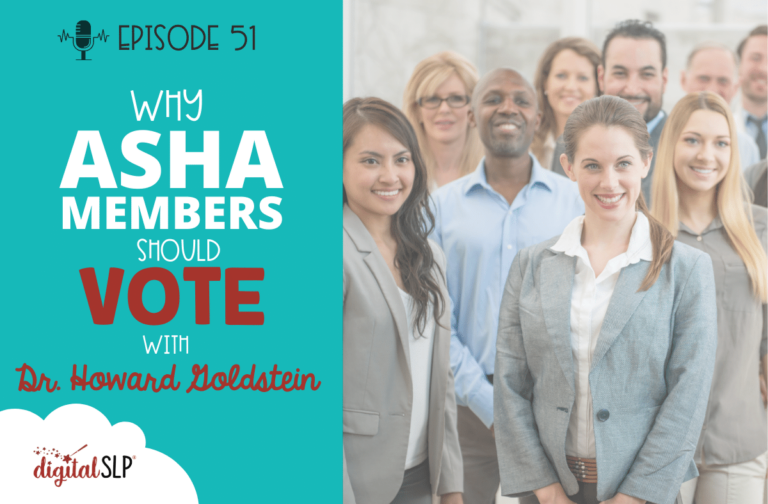



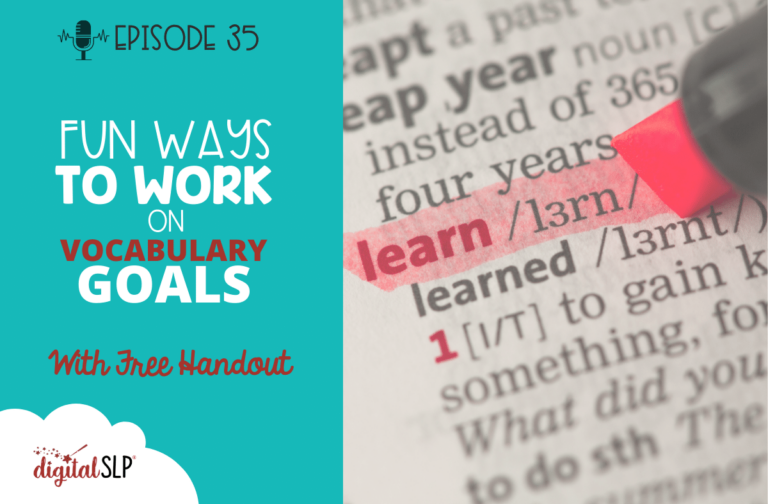
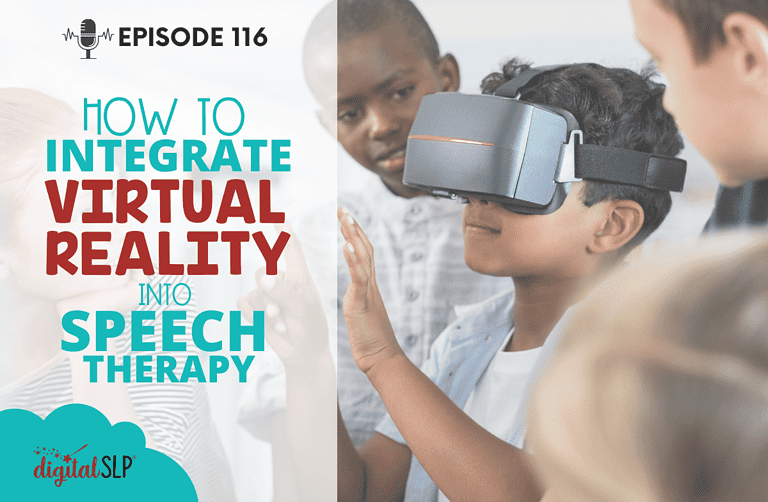
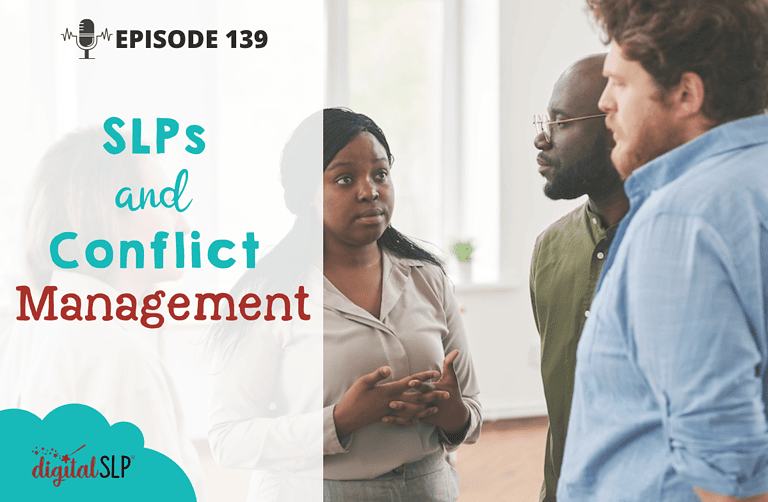
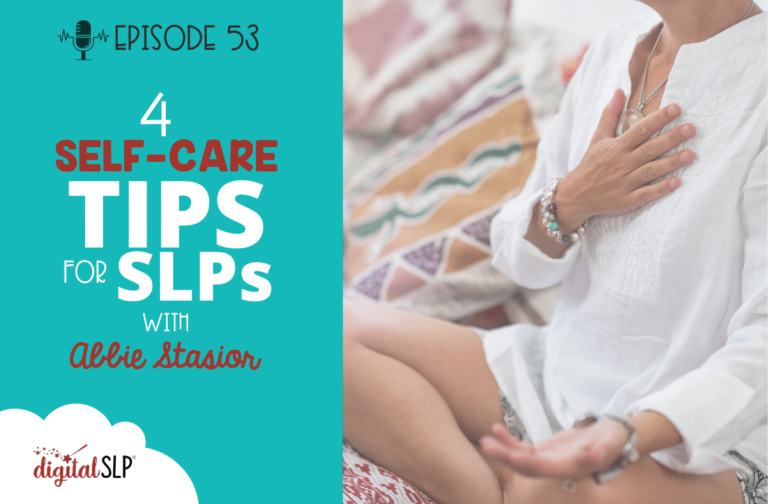
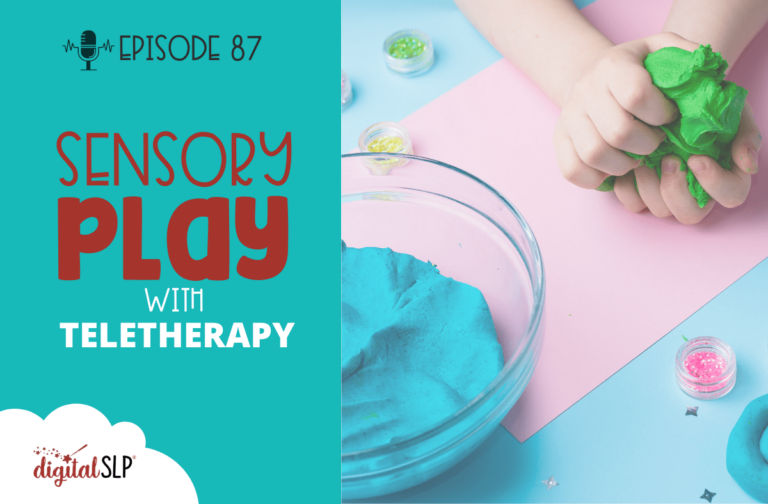
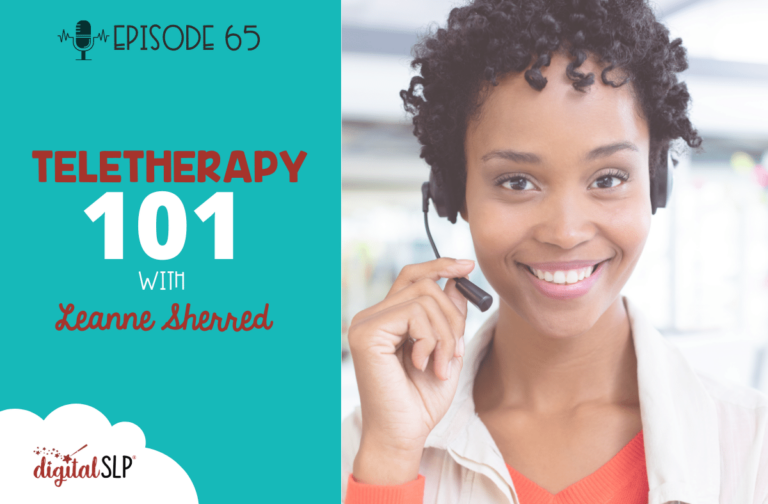

Recent Comments